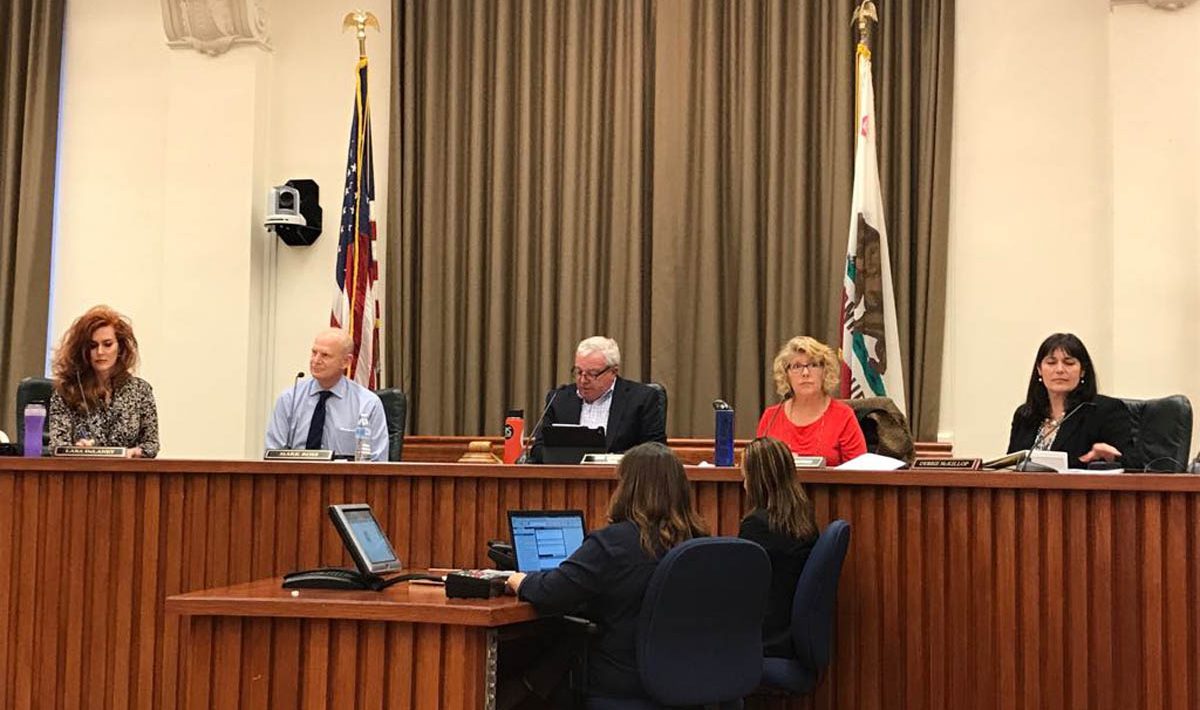MARTINEZ, Calif. – The City council reached a conclusion that resolves differences between the Martinez Youth Baseball and Softball Association (MYBSA) and the Parks, Recreation, Marina and Cultural Commission (PRMCC) about locked ball fields at Hidden Lakes Park.
Dylan Radke, PRMCC chairman, explained the problem to the council at the July 17 meeting. He had heard repeated complaints from the public about being locked out of the recently refurbished and enhanced facility.
Radke said the first time he went to staff to inquire about it, he was told the reason was that work on the two fields was still under warranty. After another complaint, he was told that the fields were wet, and therefore not playable. Finally, he said it was spring and they were still locked.
Radke and others recalled that improvements at the site were partially paid for with Measure H funds (park improvement bond that barely passed and is not paid off yet). The amount from Measure H was reportedly about $50,000.
The parks are funded by the public and should be open to the public at all times, unless others with an exclusive use permit are at the site using the facility, according to Radke’s remarks.
The staff has referred his concerns to the Council Infrastructure Sub-committee, which referred it to PRMCC.
On July 11, the PRMCC reached a consensus, “public parks are for the public,” even when there is an exclusive use agreement in place. However, the city needs a policy to clarify the issue and a use agreement that reflects the policy. They then referred the matter to the city council.
Both the Subcommittee and PRMCC members said they could see both sides of the issue after hearing MYBSA President, Phill Raines explain the league’s reasons for putting their locks on the fields.
Raines told the PRMCC that safety of the players and preservation of the facility were their motives for locking the fields. People used the property as if it was a dog park and some feces was found. Some people practiced golf, leaving dangerous divots, and teen players viewed LED scoreboard as a target for informal home-run competitions, according to Raines.
In addition, he noted that Use Agreement did not prohibit locking the facility during the time that it was in effect. City staff routinely locks fields at Waterfront Park when they are prepared for league play (usually the next day), and that was routine for MYBSA too. But the “Little League” locks were left on at other times.
Michael Chandler, deputy director of administrative services, reminded the council that MYBSA had helped with the restoration and improvements and added the scoreboard, which the city does not own.
Chandler also asked the council to advise staff on the difference between “destination parks” and “neighborhood parks.” From past practices, it appears they may have a different treatment, but without an actual policy.
The council concluded that public parks should be open when not in use, and a “first come, first served” exists. They agreed that only City locks may be used if parks are locked, and it is reasonable to lock fields when they are groomed and chalked before exclusive use play. Staff was asked to come back with recommendations for policy adjustments and suggest revisions to the exclusive use document.
In other business, the Final Map (reflecting settled lawsuits), for the development of the former Pine Meadow Golf Course property at Vine Hill Way was approved. The new Subdivision name is “Traditions at the Meadow”.
Without dissent, the council also approved signing a Memorandum of Agreement with the Northern Waterfront Economic Development Initiative, a collaborative effort of Contra Costa County and Northern waterfront cities to economically revitalize the estimated 60-mile stretch of land along the water.
During public comment, several people complained about dangerous vehicle speeds along Palm Avenue, Alhambra Avenue, and Berellesa Street.
Speed limits on Alhambra and Berellesa are generally 35 MPH and those streets are designed to move traffic expeditiously in and out of town to Highway 4. Police Chief Manjit Sappal said a 90-day Warrant Analysis (traffic study) is required to make speeding sign changes, and the results of a traffic survey will be ready soon.
He advised the council and speakers that, if studies show that more than 85 percent of drivers are exceeding the limit, it might be a reason to evaluate the idea of increasing the speed because of a court case decision that has been applied to these matters.
Various remedies were discussed, the most promising of which is a solar powered LED display sign warning drivers of their speed. Sappal said they are very effective. He said he is aware of the problem and working on it.
The limit on Palm Avenue is 25 MPH. It is a residential area, not a wide thoroughfare and there is access to an elementary school where Palm intersects Vista Way. The speaker also said there is likely a sinkhole in the street in front of her house. Her previous call to the city resulted in city workers filling the hole, but it has developed again. She believes it could be 8 feet deep.





